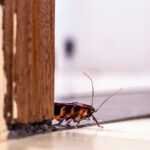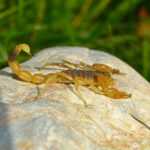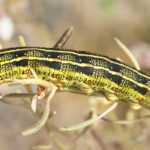Termite Inspection: What to Expect & How to Prepare
Learn what to expect during a termite inspection and how to prepare effectively. Get the insights you need to protect your home—read the article now!
Termite Inspection: Essential Tips and Costs Explained
During a termite inspection, what should homeowners anticipate? Understanding the termite inspection process, average costs, and prevention tips is crucial to protecting your property.
- A certified termite inspector checks both interior and exterior home areas to detect termite infestations before they cause major damage. This includes a comprehensive inspection of all accessible locations, such as foundation cracks, crawl spaces, attics, eaves, roof, and wood in contact with the ground, to identify current or past termite activity.
- The cost of termite inspections ranges between $75 and $325, but some pest control companies provide free inspections. Homeowners should request local price quotes.
- Regular inspections serve the dual purpose of detecting termites early and taking preventive measures to protect property value and structural integrity.
What Does a Termite Inspection Involve?
A certified termite inspector conducts thorough searches for termite signs in both interior and exterior locations of the house. When the termite inspector arrives, they will check all accessible locations, including foundation cracks, expansion joints, crawl spaces, attics, eaves, roof, and hardwood floors, and will advise homeowners on how to prepare for the inspection.
The inspection process begins with an exterior examination to find mud tubes along with damaged wood, followed by a thorough assessment of attic spaces, basements, and crawl spaces for termite presence. Inspectors pay special attention to accessible locations such as foundation cracks, crawl spaces, attics, eaves, roof, and wood touching the ground or other structures, as these are common entry points for termites. Cracks in foundation walls, expansion joints, and brickwork are carefully examined for signs of termite activity and structural vulnerabilities. The crawl space is particularly important for identifying termite activity, moisture issues, and structural problems that could attract pests.
A comprehensive inspection assesses both current and past signs of termite activity, examines structural and moisture issues, and includes detailed exterior and interior checks. A more comprehensive inspection may utilize specialized equipment to check all accessible areas, ensuring hidden signs and potential entry points are identified for long-term protection.
A standard property inspection takes between thirty minutes to one hour, depending on the property dimensions and observed conditions. For more complex cases or larger properties, the inspection may take 1.5 to 2 hours. The duration depends on both the complexity level and the degree of termite damage found during the assessment.
Annual termite inspections conducted by certified professionals remain the most effective method to protect properties from termites. Early detection reduces the possibility of extensive damage.
Average Costs of Termite Inspections
Termite inspection fees typically amount to around $100, but prices vary based on property size and location, usually ranging from $75 to $325.
The average price range nationwide spans from $50 to $325. In some states like California, inspection costs may be higher, ranging from $785 to $1,777. Homeowners should obtain local price estimates for accuracy.
Many pest control companies offer free termite inspection services as part of annual inspection packages. These free services help detect infestations while avoiding additional expenses.
Key Areas Termite Inspectors Examine
Inspectors assess the entire property through interior and exterior examinations of regions where termites tend to infest. The foundation, basement, and crawl spaces serve as primary exterior inspection points to detect entry points and concealed damage. Inspectors also check eaves, roof, and accessible locations for signs of drywood termites and moisture issues.
Interior inspections focus on attics, baseboards, door frames, cabinets, hardwood floors, and wooden structures, as termites prefer these areas due to wood content and accessibility. Homeowners should provide complete access to sinks, garages, attics, and crawl spaces.
Inspectors assess previous damage sites and potential entry points, including cracks in foundation walls, expansion joints, and brickwork. This information helps homeowners protect their homes and maintain structural integrity.
Signs of Termite Activity
Early discovery of termite activity protects homeowners from costly damage. Active subterranean termite infestations leave behind mud tubes along foundations and walls. Termite colonies are active 24/7 and can cause extensive structural damage if not detected early.
Drywood termite feces resemble small pellets called frass, often found near infested areas. Hollow-sounding wood can indicate compromised wooden structures.
Active infestations may produce small holes in wood surfaces containing termite droppings. Annual inspections help spot these warning signs early, reducing hidden damage and repair costs.
Regular inspections provide peace of mind by safeguarding property from termite damage. Early detection and treatment prevent structural damage and future expenses.
Termites are wood-destroying insects, and inspections help detect them before they compromise your home.
Preventing Future Infestations
Preventing future termite infestations requires regular inspections combined with preventive actions. Protect your foundation from moisture damage by repairing leaks, establishing proper drainage, and ventilating crawl spaces. Inspect plumbing for leaks or moisture issues, as termites are attracted to damp environments.
Ensure proper water diversion through gutters and maintain drainage near the foundation. Eliminate standing water around the foundation, roof, or crawl space to reduce moisture that attracts termites.
Maintain at least a six-inch gap between wooden siding and ground level to prevent termite entry. Place cellulose-free wood mulch at least six inches away from the foundation to limit food sources. Remove dead trees, firewood, and tree stumps from property boundaries to reduce wood-destroying insect habitats.
Inspections reveal weak points, enabling homeowners to take protective actions. Staying alert and performing preventive measures minimizes termite infestation risks.
Professional Pest Control Services
Professional pest control services are essential for termite detection and management. Licensed companies provide specialized termite detection inspections and recommend appropriate treatment plans.
These companies use state-of-the-art techniques to develop sustainable barriers against termite damage, matching the needs of environmentally conscious homeowners.
Professional inspectors use advanced equipment such as moisture meters, infrared cameras, and drills to inspect hard-to-reach areas and detect hidden termite activity.
Choosing a licensed, insured, and reputable pest control company ensures thorough inspections, detailed reports, and recommendations for treatment and ongoing termite protection.
Preparation and Process
Preparing your home is key to a thorough and efficient termite inspection. Clear clutter and stored items from crawl spaces, attics, and utility rooms. Move furniture and boxes away from walls to allow the inspector to check for termite activity, including termite droppings, mud tubes, or damaged wood.
Trim shrubs or tree branches touching the property, as these can serve as termite bridges. If you have noticed signs of termite activity, such as frass piles, mud tubes, or unexplained wood damage, point these out to the inspector.
Providing easy access to all areas improves the chances of detecting infestations early and protecting your property from damage.
Essential Tips for a Successful Termite Inspection
- Hire a qualified termite inspector experienced with subterranean and drywood termites.
- Ensure the inspector has full access to crawl spaces, attics, and exterior areas.
- Be present during the inspection to ask questions and receive immediate feedback.
- Familiarize yourself with common signs of termite infestations like mud tubes, droppings, and damaged wood.
Following these tips helps ensure a comprehensive inspection and early identification of infestations.
Next Steps and Prevention
After inspection, the termite inspector provides a report and treatment recommendations if termites are found. Treatment options include baiting systems, soil treatments, or localized wood treatments.
To prevent future infestations, fix leaks, ventilate crawl spaces, avoid stacking wood near the home, and keep the foundation clear of debris and mulch.
Schedule regular inspections, ideally annually, to catch termite activity early and minimize repair costs.
Frequently Asked Questions
How do they check your house for termites?
Inspectors look for moisture signs since termites prefer damp conditions. They check for mud tubes, damaged wood, and other signs of infestation around and inside the home.
How often should I get a termite inspection?
Termite inspections should be performed every 1 to 2 years to detect infestations early and prevent major damage.
What are the signs of termite activity?
Signs include mud tubes, small droppings resembling pellets (frass), hollow-sounding wood, and small holes in wood surfaces.
How much does a termite inspection cost?
Inspections typically cost between $75 and $325, depending on property size and location, with an average around $100.
Can I get a free termite inspection?
Many pest control companies offer free termite inspections as part of their services or annual evaluation programs. Contact local providers to learn about current offers.



